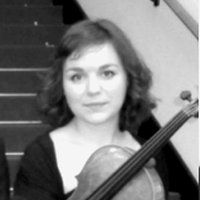Dynamics of fluid interfaces
- Duration: 11 weeks
- Effort: 44 hours
- Pace: ~4 hours/week
- Languages: English and french
Description
Interfaces such as between water and air or water and oil hold a special kind of energy called surface energy or surface tension. At small length scale, typically below 1 cm the surface energy, possibly with gravitational energy, kinetic energy or viscous dissipation dictates the shape and evolution of interfaces.The purpose of this course is to provide a basic understanding of interfacial phenomena going from the shape of rain drops, the fragmentation of a jets, the water repellent properties of leaves to the bursting of soap bubbles.
The concepts and physical quantities are always introduced from an experimental observation. In the derivations, we favor scaling laws instead of detailed mathematical calculations in order to extract the essence of the underlying physics.
The laws of capillarity were established at the beginning of the nineteenth century. However research in this field is very active because of its position at the frontier between applied and fundamental science. For instance, the development of microfluidic devices has raised a number of questions related to the dynamics of fluid interfaces. The design of smart interfaces with original wetting properties has enabled the manipulation of drops on solids. The development of new tools both at micro-scale (atomic force microscopy) and macro-scale (digital high speed imaging) has revolutionized experiments.
In every part, we have included illustrative videos from recent publications, either kindly provided by colleagues throughout the world or from our own research. For those who want to go beyond this course, references to research contributions in scientific journals are given.
Format
The 6 parts are divided in several chapters. For each chapter, the relevant concepts are introduced with experimental videos and explained with simple laws. The use of scaling arguments in the derivation of physical laws is preferred because the identification of key physical parameters provides a better understanding of the underlying phenomena. In some cases, a detailed analytical solution is not available, but scaling relations still give a guide on the quantitative evolution of physical variables. Additional videos from recent research complement the course and serve as bases for exercises.
The students should watch the videos in the order which is proposed, since the different concepts are introduced progressively. The exercices vary in difficulty, some are rather easy, others involve quite subtle hypotheses. There will be no feedback from the teaching staff, but a forum section is provided for the discussion between students.
The original videos are in english as well as the exercises, but a french version is also provided. The course can be followed in both languages.
The 6 parts are divided in several chapters. For each chapter, the relevant concepts are introduced with experimental videos and explained with simple laws. The use of scaling arguments in the derivation of physical laws is preferred because the identification of key physical parameters provides a better understanding of the underlying phenomena. In some cases, a detailed analytical solution is not available, but scaling relations still give a guide on the quantitative evolution of physical variables. Additional videos from recent research complement the course and serve as bases for exercises.
The students should watch the videos in the order which is proposed, since the different concepts are introduced progressively. The exercices vary in difficulty, some are rather easy, others involve quite subtle hypotheses. There will be no feedback from the teaching staff, but a forum section is provided for the discussion between students.
The original videos are in english as well as the exercises, but a french version is also provided. The course can be followed in both languages.
Prerequisites
This course can be followed at different levels, starting from a bachelor level in physical sciences. In order to fully grasp the derivations of the physical laws, a knowledge of elementary classical physics is required. In particular a knowledge of the bases of fluid mechanics is very helpful.
Assessment and certification
Students should try to evaluate their understanding by trying to re-derive the physical laws by themselves and by doing the proposed exercises and comparing their answers with the given solutions. No certificate of success is provided.
Course plan
- Part 1 : Surface Energy, Surface Tension
- Surface Energy
- Surface Tension
- Capillary Pressure
- Instability of Cylindrical Interfaces
- Part 2 : Solid-liquid Contact
- Contact Angle
- Hysteresis
- Gravity Effects
- Part 3 : Non Wetting
- Hydrophobicity, Superhydrophobicity
- Leidenfrost Drops
- Part 4 : Capillarity and Viscosity
- Capillary number
- Entrainement and Coating
- Wetting Dynamics
- Part 5 : Capillarity and inertia
- Liquid Films and Sheets
- Jets
- Impacts
- Capilary Waves
- Part 6 : Gradients de tension de surface
- Marangoni Flows
- Tensioactive Agents
Course team
Christophe Clanet
Categories
Marc Fermigier
Categories
David Quéré
Categories
Lucie Domino
Categories
Martin Coux
Categories
Organizations
License
License for the course content

Attribution-NonCommercial-NoDerivatives
You are free to:
- Share — copy and redistribute the material in any medium or format
Under the following terms:
- Attribution — You must give appropriate credit, provide a link to the license, and indicate if changes were made. You may do so in any reasonable manner, but not in any way that suggests the licensor endorses you or your use.
- NonCommercial — You may not use the material for commercial purposes.
- NoDerivatives — If you remix, transform, or build upon the material, you may not distribute the modified material.
License for the content created by course participants

All rights reserved
"All rights reserved" is a copyright formality indicating that the copyright holder reserves, or holds for its own use, all the rights provided by copyright law.







